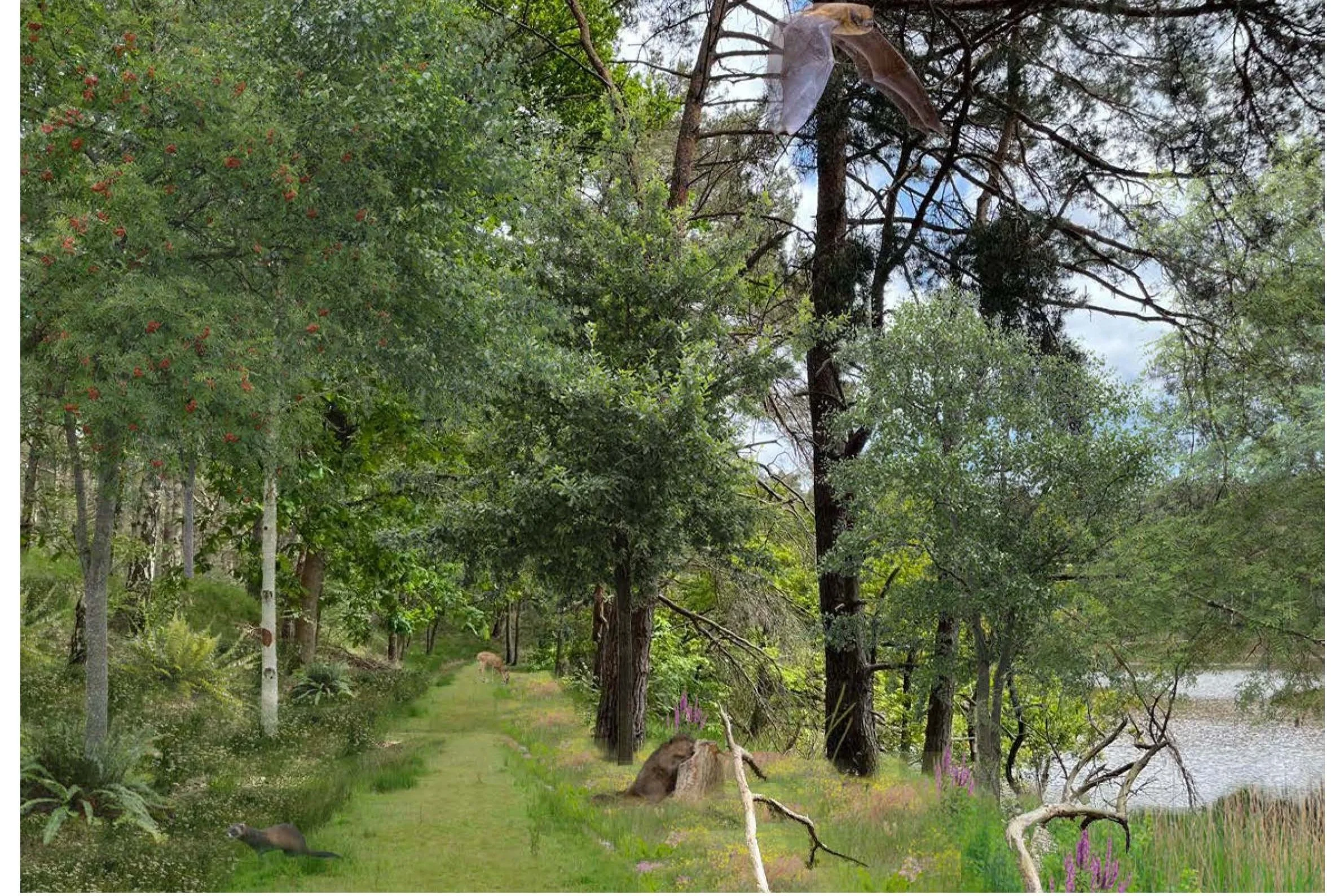ANTITANKGRACHT I BE, Antwerp regio
VISION: ANTITANKGRACHT – A CONTINUOUS LINE OF HISTORY AND NATURE
How often do you get the chance as a designer to rethink the longest continuous protected historical heritage site in Flanders? From a piece of military architecture crafted by human hands to a natural landscape system embraced by time. The landscape gradually enveloped the Antitankgracht (ATG) as the years went by. How can we bring the story of the ATG into the hearts of people today? It’s not easy to trace the role of the buildings around the ATG almost 80 years later. There is much to restore, but that’s not the narrative we want to tell here.
The ATG as a recognizable, continuous, accessible, and visible line emerged as the initial thought during the brainstorming session. But does the tank trench still want us there as humans? Lessons for the future hide in every corner of this project.
This document presents a vision and a way of thinking about how we can engage with a structure like the Antitankgracht. How it can fit into a world where humans are not the dominant species, where we learn from natural processes and even use capitalism to finance these transformations. Truly listening to the needs of nature instead of trying to mold it to human desires.
The Antitankgracht lay hidden in the landscape for years, abandoned by the military, who saw no further strategic use for this line through the northern Kempen. But nature had other plans. Bats, beavers, and otters made it their home, bringing life back to this forgotten place. By fostering diverse habitats, a multitude of species have now made the trench and its surroundings their territory. The Antitankgracht has become a line of human silence and tranquility—how wonderful. It stands as a prime example of cohesion between nature and heritage. Unlike its bigger counterpart, the New Dutch Waterline, where human activity left a more significant footprint, here, the impact is gentler.
Meanwhile, surrounding villages and towns have grown more inwardly, focusing on strengthening their cores. Enhanced pedestrian, cycling, and rail connections now weave through these communities, supported by strategic planting. People have learned to observe and understand nature better through increased educational opportunities during leisure moments. Consequently, human intrusion on this delicate ecosystem has diminished.
The Antitankgracht, once a military barrier, now stands as a continuous line of history and nature—a narrative of coexistence, learning, and respect for the natural world.
Location: BE, Antwerp regio / Year: 2023 / Public project
Photoshop Fort as ecohabitat









